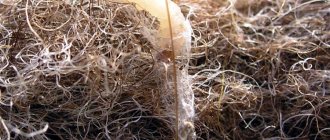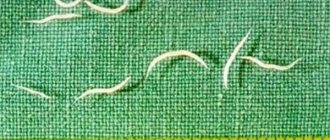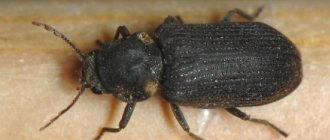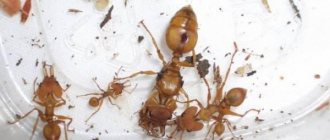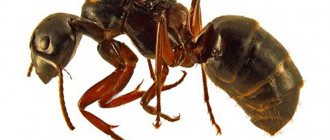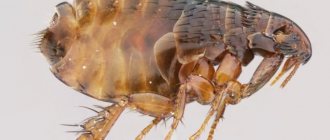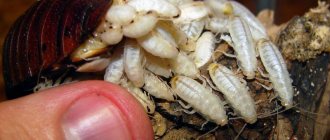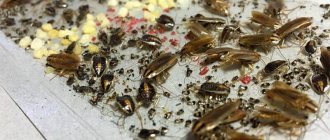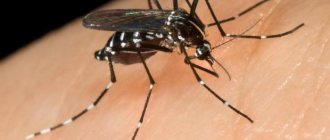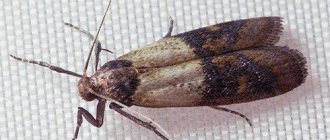If you see that there are bugs in the flour, do not panic. Moaning about how this could happen to you, such a neat and tidy housewife, makes no sense. We need to take active action immediately. The work ahead is serious, since the small bugs in the cereal with a high degree of probability have already managed to lay eggs and many traces of their vital activity. Regular sifting will not solve the problem. In a similar way, you can get rid of flour bugs, but not what they left behind. At the same time, even if you throw away contaminated products, you cannot be sure that the parasites will not appear again soon.
Why do bugs appear in cereals?
Many people believe that kitchen pests arise only as a result of gross violations of sanitation and hygiene standards. Unfortunately, it is not. Flour bugs can live in your food, even if you regularly do thorough wet cleaning. The main reason for the appearance of parasites is non-compliance with control standards at food production enterprises. Some manufacturers ignore even such a mandatory procedure as heat treatment, not to mention high storage standards.
You can detect black bugs in cereals even if you purchased the product in vacuum packaging. Insects usually have plenty of time to “invade” while the product is awaiting packaging. Bugs in the kitchen do not limit their stay to one “house”. They quickly and willingly master new nutrient environments, while not forgetting about future generations. Parasites reproduce very quickly and fruitfully. The answer to the question of how to get rid of insects in cereals and in the cupboard will be incomplete if it does not contain information on how to find and destroy egg-laying insects. And they can be located almost anywhere, including the most inconspicuous crevices in furniture. Fortunately, this problem can usually be dealt with without the help of strong chemicals.
How to fight parasites
What should you do if pests such as mealworms are found in your house, and what methods are there to completely destroy them? In fact, there are enough techniques that are guaranteed to help get rid of the annoying parasite.
First of all, it is necessary to carry out a detailed audit of the places where food is stored. You should also carry out general cleaning, with the obligatory use of special parasitic agents.
If the parasites have just begun to appear and their number is not widespread, you should not rush to get rid of the food at the same hour.
For example, the same cereal can be sifted through a sieve, then placed in the oven, where it is heated for 3-5 minutes at a temperature of 100 degrees and these products can be used first after processing.
Also, some tips can help in removing parasites, for example:
When carrying out general cleaning, it is extremely important that it is carried out in one approach.
If the cleaning procedure lasts for at least a couple of days, then the fight using these methods will simply lose its relevance.
Also, when cleaning, it is not recommended to use old-type vacuum cleaners that are not equipped with an aquafilter, since it has been proven that parasites perfectly retain their viability in these dust collectors, and therefore actively multiply.
For natural reasons, pesticides cannot be used to kill parasites.
Moreover, you can fight these worms quite successfully using the most common methods.
Bugs in the kitchen: varieties
Before we move on to discussing the question of how to get rid of cereal bugs in the kitchen, let's take a closer look at the “opponents”. Insects, whose vital needs so unfortunately coincided with our interests, belong to one of the following varieties:
- flour beetles;
- bread grinders;
- food moth;
- red mucoeds.
The most widespread parasites are the first type. These are small brown individuals, the length of which does not exceed 4 mm. A small flour bug usually gets into the home along with a bag of starch or some kind of powder mixture. Once in the closet, the hruschaks immediately begin to look for new habitats. If there is a loosely closed container with other bulk products nearby, the flour beetle will definitely “master” it. Cereals, rice, dried fruits and buckwheat are also at risk, although these pests are much less interested in them.
Naturally, the longer the little black bugs in the kitchen go unnoticed, the more food will be destroyed. Khrushchaki reproduce very quickly, laying their eggs in a variety of places. Newborn larvae immediately begin to invade nearby “deposits”. We will tell you below how to deal with bugs in cereals and flour.
Other types of harmful insects are much less common. The mole is easy to spot. Its adults can reach 10 cm in length. Outwardly, these cereal beetles resemble silver butterflies. Such “guests” enter the apartment through ventilation and windows. The object of their attention is products stored in the public domain.
Bread grinders and flour eaters prefer to settle in industrial enterprises. When it comes to these insects, the problem of how to get rid of insects in cereals concerns more the personnel of the above organizations. However, unfortunately, ordinary citizens also have to deal with them. Grinders are small flying white bugs in the kitchen that can measure up to 3mm. Their target is usually bread and flour products: biscuits, cookies, etc. In this regard, they pose the greatest danger to bakeries and flour mills. Grinders enter residential buildings through bags of food or animal feed. In addition to bakery products, these food bugs happily consume coffee, tea, dry plants, animal feed and even book bindings. So if they happen to be your guest, it's not just your kitchen cabinets that may need a major cleaning.
How to get rid of flour eater is also a relevant question mainly for owners of food enterprises. These miniature red insects can only feed on rotten grain or flour. If the humidity of the product is below 15%, it is not in danger. How to get rid of mucoed in an apartment? Very simple. You just need to throw away substandard food in a timely manner. The main danger lies in cheap animal feed. If you take the choice of food for your pet with sufficient responsibility, then these small bugs will never appear in the kitchen. If trouble happens, you have no choice but to act according to the scheme described below.
Shelf life of different types of flour
Flour, depending on the variety, is stored from 2-3 months to several years. I offer a cheat sheet for housewives, be sure to keep it for yourself.
How long can flour be stored?
| Variety | Shelf life in months |
| Wheat baking | 6-8 |
| Wheat pasta | 8-12 |
| Rye | 4-6 |
| Krupchatka | 12-18 |
| Top grade | 12 |
| First grade | 12 |
| Second grade | 10-12 |
| Wallpaper | 4-6 |
| Ripped off | 4-6 |
| Seeded | 3-5 |
| Corn | 10-24 |
| Pea | 12-16 |
| Oatmeal | 8-10 |
| Soy | 6-9 |
| Rice | Up to 10 years |
| Buckwheat | 1-3 |
| Tapioca | 1-3 |
| Peanut | 2-6 |
| Sorghum | 4-6 |
| Coconut | 3-6 |
| Linen | 8-24 |
| Barley | 10-18 |
| Almond | 2-4 |
The difference in terms depends on storage conditions. The lower the humidity level, and the less oxygen available, the longer the flour can be used.
If there are bugs in the flour, can it be used?
Many thrifty owners are interested in what to do if there are bugs in the rice. Is it possible to eat it or is it better to immediately throw it away out of harm’s way? Ideally, spoiled products should be disposed of. Elementary disgust has not yet been abolished, in addition, even a mass thoroughly cleaned of adult individuals may contain the remnants of their vital activity. It’s not enough to get the beetles out of the grains; you also need to be sure that the cleaning was perfect. Even if you calmly accept the fact that parasites are in your food, this will not save you in case of poisoning. The consequences may be the most tragic.
If you are thinking about how to get rid of bugs in the kitchen and at the same time do not want to throw away spoiled food entirely, the processing should be as thorough as possible. In the case of flour, you will need a sieve with the smallest mesh possible. Not only adults should remain on the grill, but also the larvae and debris they produce. However, it is not enough to simply remove insects in flour in the kitchen. To gain complete confidence in the safety of purified food, it must be subjected to thorough heat treatment. There are two ways to influence insects with temperature. You can finally get rid of the flour bug by placing the sifted mixture in the oven. Drying at a temperature of fifty degrees will not leave any chance for harmful residues. Another option is to freeze. A day in the freezer will also destroy all germs.
What to do if insects are found in cereals? How to get rid of them without throwing away the entire product. In such situations, the cleaning process is even easier. Simply pour salt water over the rice, beans or beans and leave for a few minutes. After some time, all the bugs in the cereal will separate from the main mass and float up, as well as their derivatives. After this, all that remains is to carefully drain the water and dry everything on a clean cloth. Once you get rid of flour bugs, use the products as soon as possible. Some of the taste will be lost, but the nutritional properties will remain at an acceptable level.
Restorative actions make sense only when only a small part of the main mass is affected. If insects in cereals or flour have left behind an impressive “web” of yellow worms, you should come to terms with the loss and do everything to ensure that a similar situation does not happen again. Spoiled food should be thrown away along with its container. The bag or sack is carefully packed in sealed cellophane and only then taken out of the house.
How to fight parasites
What should you do if pests such as mealworms are found in your house, and what methods are there to completely destroy them?
In fact, there are enough techniques that are guaranteed to help get rid of the annoying parasite. First of all, it is necessary to carry out a detailed audit of the places where food is stored. You should also carry out general cleaning, with the obligatory use of special parasitic agents.
If the parasites have just begun to appear and their number is not widespread, you should not rush to get rid of the food at the same hour.
For example, the same cereal can be sifted through a sieve, then placed in the oven, where it is heated for 3-5 minutes at a temperature of 100 degrees and these products can be used first after processing.
Also, some tips can help in removing parasites, for example:
When carrying out general cleaning, it is extremely important that it is carried out in one approach.
If the cleaning procedure lasts for at least a couple of days, then the fight using these methods will simply lose its relevance.
Also, when cleaning, it is not recommended to use old-type vacuum cleaners that are not equipped with an aquafilter, since it has been proven that parasites perfectly retain their viability in these dust collectors, and therefore actively multiply.
For natural reasons, pesticides cannot be used to kill parasites.
Moreover, you can fight these worms quite successfully using the most common methods.
How to get rid of bugs in cereals and in the kitchen cabinet
Having dealt with the products, they proceed to the next stage - the destruction of traces of insect activity. If this is not done, then the question of how to get rid of brown bugs in the kitchen will arise before you with unenviable regularity. Parasites lay their eggs in a variety of places, so their larvae can appear anywhere in the food cabinet.
To ensure that little brown bugs in the kitchen don’t have a chance, you need to thoroughly disinfect all shelves and containers located on them. The cabinet is completely emptied of bags and containers, after which all food debris (spilled flour, cereal, etc.) is carefully swept out. The latter need to be flushed down the toilet. Never be frugal. Even if there are no beetles in the flour, traces of their presence may remain.
The shelves are wiped with a vinegar solution. One tablespoon of vinegar for a liter of water is enough. When there are bugs in your kitchen cabinet, getting rid of them is not so easy. They leave eggs in almost imperceptible crevices, so heat treatment will also be required. All places where there is even the slightest suspicion of holes should be poured with boiling water. During the procedure called “fighting beetles in cereals”, it is necessary to pay sufficient attention to the containers used to store products. The jars are thoroughly washed with laundry soap and then doused with boiling water. Bags and bags made of fabric are treated with saline solution. Once they dry out, the beetles in the rice will definitely not be able to lay eggs. There is no need to rinse the material.
If you are not sure that you have managed to finally get rid of black bugs in the kitchen, you can use folk remedies. The first method is to use homemade bait. Mix fine grains with powdered sugar and brown sugar in equal proportions. The resulting composition is laid out on paper sheets and placed on shelves. This mixture is completely safe for us, but it really helps to get rid of bugs in the kitchen in cereals and flour.
The second option is to purchase pyrethrum at the pharmacy, made from chamomile (Persian, Caucasian). You can simply sprinkle the powder on the shelves or pour it into linen bags. This very effective remedy for bugs in cereals also does not pose any threat to human health.
Chemistry
It is quite natural that when thinking about how to get rid of insects in cereals, the possibility of using chemicals is considered last. Moreover, as a rule, it is possible to cope with the problem with “clean” means. But if the measures described above do not bring results, the following drugs can help get rid of midges in cereals:
- "Anti-bug";
- chalk “Mashenka”;
- "Karbofos".
What to do if there are bugs in the kitchen and your financial options are limited? Chalk "Mashenka" costs 5-6 times cheaper than the next most affordable "Karbofos". To repel insects, you only need to coat the inside corners of the cabinets. Antizhuk is the most expensive, but it has the highest efficiency on this list. The advantage of Karbofos is the variety of forms: tablets, aerosol, powder, liquid. If you decide to get rid of bugs in cereals and flour in the kitchen using chemicals, carefully follow the instructions. It is important that the treated areas are inaccessible to animals. The poison, designed for small parasites, is poison for both dogs and cats.
Is it a worm?
Mealworms and parasites are not simple, and in order for methods to combat them to be successful, you need to know everything about its physiological and other characteristics, how exactly they reproduce, and who they essentially are.
If this is not done, then no matter what efforts are made to destroy them, the parasites in flour and other products will continue their vital activity, not paying attention to the proximity of humans.
Before we start talking about parasites such as mealworms, and what methods are suitable for destroying them, it should be noted that by their nature, these parasites do not belong to the category of worms, but are merely larvae in the life of such beetles as stoneweed and beetleworm.
When the beetles enter the breeding season, the female parasite lays eggs and from them later appears that same terrible worm, which people find eating flour or cereals.
It is equally important to note about these pests that the larval form of the tape parasite, called Spiroptera obtusa, lives in the body of Tenebrio molitor larvae.
This parasite, when it becomes an adult, is able to parasitize the intestines of mice, which with great pleasure eat mealworms that they come across.
As a result, mice become infected with this parasite, and subsequently, they secrete their eggs into the flour along with their feces, which, together with the flour, serve as food for the larvae.
Among other things, gregarines are sometimes found in the larvae, which are single-celled intestinal parasites, and they do not cause significant harm either to the worms or to the animals that they might feed on.
What is also important to note is that all these worms mainly appear in mills, flour mills and wholesale warehouses of finished products.
It is in these places that their vigorous life activity mainly takes place, and eggs are laid, which, due to their microscopic size and adapted appearance, are practically undetectable with the naked eye.
The incubation period of the parasite is 12 months and because of this, they perfectly tolerate the packaging of finished products in factory bags and containers, where they can remain for months, after which they end up in kitchens, and in them they acquire a painfully familiar appearance.
If we put all of the above in other words, then it is basically impossible to avoid mealworms getting into products, no matter what efforts are made to do so.
Due to the fact that they reach humans already in contaminated products, it is incredibly difficult to identify them even with a microscope.
Therefore, the only thing that can be done to help in such a situation is to limit the potential spread of parasites to other foods and cereals.
It is also advisable to carry out regular stock checks as this can identify parasites at an early stage and therefore the necessary action can be taken.
Prevention
If there are bugs in the cereal, getting rid of them is not so difficult, but it will require some time and effort. In addition, you will have to say goodbye to at least part of the product affected by insects. The best way to deal with parasites is not to give them a single chance to “populate”. Keep your cupboards and kitchen counter tidy, and store food supplies in airtight containers. Check regularly for cereal bugs. Getting rid of the problem at an early stage is much easier and less expensive. The more supplies you have at home, the more often you need to audit.
If you don’t want to think about where the bugs got into the flour and what to do with them, don’t neglect prevention. One of the means to prevent the appearance of harmful insects is the use of strong odors. Bay leaves, garlic and cloves on the shelves will become quite a serious barrier for parasites. Bugs will not appear in flour if it is stored in a glass or plastic container with an airtight lid. The main thing is that the product is clean from the beginning.
We have already mentioned why bugs most often appear in cereals. What can you do to eliminate the possibility of bringing home low-quality food? Firstly, try not to purchase dubious goods on the cheap. Secondly, new products should be subjected to heat treatment. Staying in the freezer will completely kill the bugs in flour and cereals. Science has not yet figured out how to get rid of possible larvae in another way. Note that parasites can also live in tea, cocoa, pasta and dried fruits. Finally, let us express our hope that your peace will never be disturbed by bugs in your cereal. You already know how to get rid of them in the kitchen, but not all knowledge needs practical testing. You can get more detailed information on important everyday issues on the website of our company in Moscow.
Source
Is it a worm?
Mealworms and parasites are not simple, and in order for methods to combat them to be successful, you need to know everything about its physiological and other characteristics, how exactly they reproduce, and who they essentially are.
If this is not done, then no matter what efforts are made to destroy them, the parasites in flour and other products will continue their vital activity, not paying attention to the proximity of humans.
Before we start talking about parasites such as mealworms, and what methods are suitable for destroying them, it should be noted that by their nature, these parasites do not belong to the category of worms, but are merely larvae in the life of such beetles as stoneweed and beetleworm.
When the beetles enter the breeding season, the female parasite lays eggs and from them later appears that same terrible worm, which people find eating flour or cereals.
It is equally important to note about these pests that the larval form of the tape parasite, called Spiroptera obtusa, lives in the body of Tenebrio molitor larvae.
This parasite, when it becomes an adult, is able to parasitize the intestines of mice, which with great pleasure eat mealworms that they come across.
As a result, mice become infected with this parasite, and subsequently, they secrete their eggs into the flour along with their feces, which, together with the flour, serve as food for the larvae.
Among other things, gregarines are sometimes found in the larvae, which are single-celled intestinal parasites, and they do not cause significant harm either to the worms or to the animals that they might feed on.
What is also important to note is that all these worms mainly appear in mills, flour mills and wholesale warehouses of finished products.
It is in these places that their vigorous life activity mainly takes place, and eggs are laid, which, due to their microscopic size and adapted appearance, are practically undetectable with the naked eye.
The incubation period of the parasite is 12 months and because of this, they perfectly tolerate the packaging of finished products in factory bags and containers, where they can remain for months, after which they end up in kitchens, and in them they acquire a painfully familiar appearance.
If we put all of the above in other words, then it is basically impossible to avoid mealworms getting into products, no matter what efforts are made to do so.
Due to the fact that they reach humans already in contaminated products, it is incredibly difficult to identify them even with a microscope.
Therefore, the only thing that can be done to help in such a situation is to limit the potential spread of parasites to other foods and cereals.
It is also advisable to carry out regular stock checks as this can identify parasites at an early stage and therefore the necessary action can be taken.
